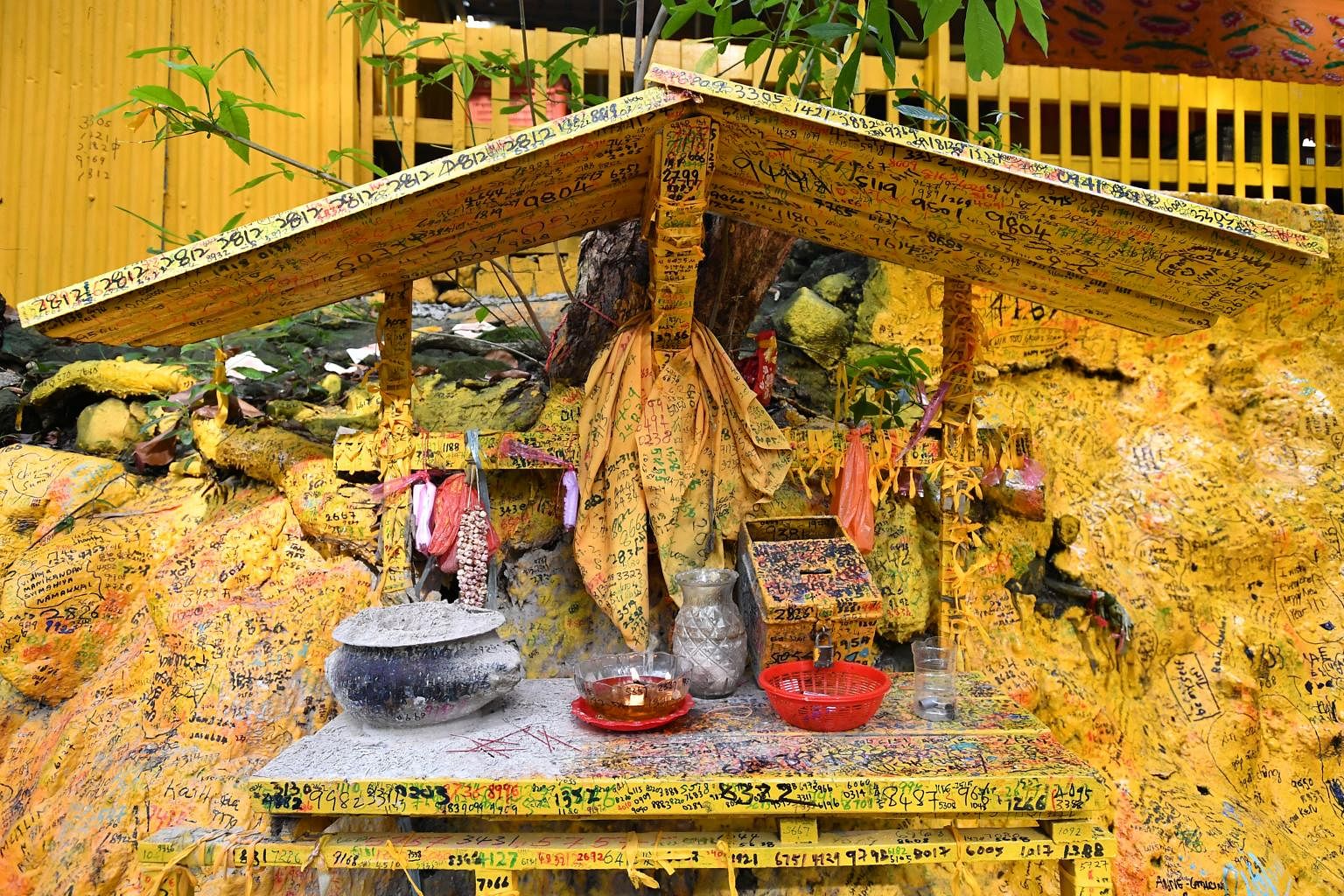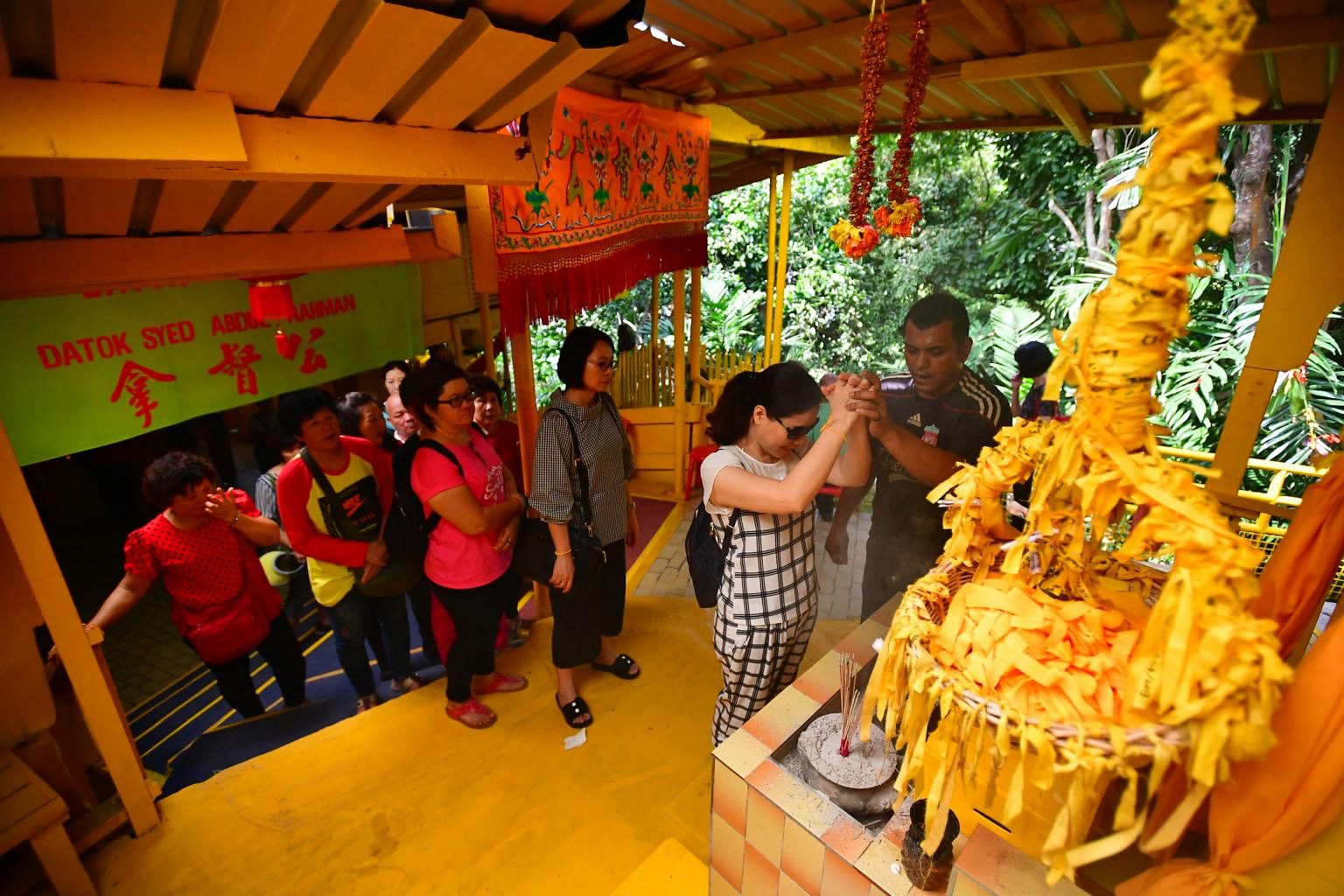Malay shrines in Kusu Island blaze were built for pious family
Sign up now: Get ST's newsletters delivered to your inbox
Anjali Raguraman, Anjali Raguraman
Follow topic:
SINGAPORE - A fire on Sunday evening (April 17) ravaged a cluster of shrines situated on top of a hill on Kusu Island.
Aided by a heavy downpour on Sunday night, the Singapore Civil Defence Force (SCDF) managed to put out the blaze at the hilltop where three Malay shrines, or keramat, are located.
However, in pictures shared on SCDF's Facebook page in the early hours of Monday, the shrines appeared razed to the ground - a tangle of zinc roofs and debris.
The shrines are at the top of a flight of 152 steps.
While one of them is dedicated to a pious figure named Syed Abdul Rahman, the other two are believed to be of his mother, Nenek Ghalib, and his sister, Puteri Fatimah Shariffah.
Inscriptions at the shrines have revealed that Nenek Ghalib had visited a Straits Chinese man, Hoe Beng Whatt, in his dreams in 1917, and requested that the shrines be built. To reward him as well as donors who contributed financially to the construction of the shrines, Nenek Ghalib would bestow success upon them.
The shrines, said to have been built in the early 1920s, are also visited by devotees who make the trip to Kusu Island to visit the Chinese Da Bo Gong (Tua Pek Kong) Temple.
Built in 1923, the temple is best known for attracting thousands of devotees every year during an annual pilgrimage, which primarily takes place during the ninth month of the Chinese lunar calendar, typically between September and November. Last year's pilgrimage period lasted from Oct 6 to Nov 4.
The Chinese temple and Malay shrines are looked after by caretakers - a role that has been passed down the generations within families.
At the shrines, blessings by the caretakers are chanted in a mixture of Hokkien and Malay, while devotees burn joss paper and other offerings.
At both sites, devotees pray for peace, prosperity and wealth.
The shrines and temple are also popular with childless couples. The temple houses a "fertility tree" where written wishes can be hung, while stones are tied at the shrines.
Kusu Island, located off the Southern shore of Singapore, is accessible only by ferry.
Kusu means "tortoise" or "turtle" in Hokkien.


A turtle sanctuary can also be found on the island behind the Chinese temple.
The Singapore Heritage Society told The Straits Times that it was saddened to hear about the fire.
"We are glad no one appears to be hurt," said a spokesman for the society.
"The shrines are well loved by the community and significant to many, both historically and spiritually. We hope that any damage can be repaired swiftly.
"The large number of people who use these shrines demonstrates how meaningful shrines and temples are to Singapore heritage and cultural identity."

